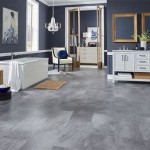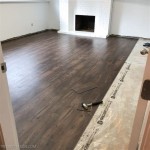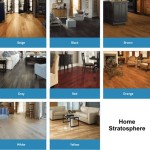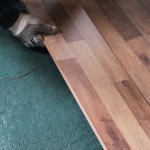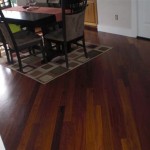Engineered Wood Flooring vs. Hardwood Laminate: A Comprehensive Comparison
When embarking on a home renovation project, choosing the right flooring material is paramount. Engineered wood and hardwood laminate are two popular options that often compete for attention. Both offer aesthetic appeal and durability, but their construction and characteristics differ significantly. Understanding the nuances of each type of flooring is crucial for making an informed decision that aligns with your needs and budget.
Construction and Composition
Engineered wood flooring is composed of multiple layers. The top layer is a thin veneer of real hardwood, typically ranging from 1/16 to 1/4 inch thick. This veneer provides the visual appeal and character of real hardwood. Beneath the veneer are layers of plywood or other engineered wood materials, which offer stability and strength. The bottom layer is a moisture-resistant backing that protects the flooring from subfloor moisture.
Hardwood laminate flooring, on the other hand, is not made from real wood. It consists of a core layer of high-density fiberboard (HDF) or medium-density fiberboard (MDF) that is covered with a photographic image of wood, stone, or other materials. A clear wear layer, typically made of melamine or acrylic, protects the image and provides durability. The bottom layer is a moisture-resistant backing.
Durability and Performance
Engineered wood flooring offers superior durability in comparison to hardwood laminate. The solid hardwood veneer is more resistant to scratches, dents, and wear. It can be refinished multiple times, extending its lifespan and allowing for a fresh look over time. However, engineered wood can be susceptible to moisture damage, especially if exposed to excessive water or humidity.
Hardwood laminate is known for its scratch and stain resistance. The wear layer protects the image from damage, making it a practical choice for high-traffic areas. It is also moisture resistant, making it suitable for kitchens and bathrooms. However, laminate flooring cannot be refinished, and its wear layer will eventually wear down, limiting its lifespan.
Aesthetics and Appearance
Engineered wood flooring comes in a wide variety of wood species, colors, and finishes, allowing for a personalized look that complements different interior styles. The real wood veneer offers a natural and authentic appearance, with varying grain patterns and textures.
Hardwood laminate offers a broad selection of design options, ranging from classic wood patterns to contemporary designs. It can mimic various materials, including stone, tile, and even concrete. However, the photographic image may not have the same depth and realism as real wood, and it can lack the natural variations that are inherent in genuine hardwood.
Installation and Maintenance
Engineered wood flooring is typically installed using a floating method, where planks are clicked together without the use of nails or glue. This method offers flexibility and ease of installation. However, it requires a smooth and level subfloor to prevent unevenness and squeaking.
Hardwood laminate flooring is also installed using a floating method, making it a DIY-friendly option. It can be installed over most existing subfloors, including concrete, wood, and tile. Both engineered wood and hardwood laminate require routine maintenance, such as sweeping, vacuuming, and occasional mopping.
Cost Considerations
Engineered wood flooring generally costs more than hardwood laminate. The price difference is partly due to the use of real wood in the top veneer. However, the durability and refinishing capabilities of engineered wood make it a long-term investment.
Hardwood laminate is more affordable, making it an attractive option for budget-conscious homeowners. However, its limited lifespan and inability to be refinished may lead to higher long-term costs.
Conclusion
The choice between engineered wood flooring and hardwood laminate depends on individual needs, preferences, and budget. Engineered wood offers durability, versatility, and authenticity, while hardwood laminate provides affordability, moisture resistance, and a wide range of design options. Carefully considering the pros and cons of each type will help you choose the flooring solution that best suits your home and lifestyle.

Engineered Wood Flooring Vs Laminate Albany Woodworks

Is Engineered Wood Better Than Laminate Beautify Your Terrace Garden With Gazebos Aluminium Louvers Bb Floors

Hardwood Vs Laminate Engineered Floors What S The Difference Clean My Space

Laminate Flooring Vs Engineered Hardwood Lifecore

Ultimate Guide To Laminate V Hardwood Flooring

Comparing Laminate Flooring To Engineered Wood Vs

Engineered Hardwood Floors Vs Laminate Find The Best One

Engineered Hardwood Vs Laminate Floor Choice

Engineered Wood And How It Differs From Solid

Engineered Hardwood Floors Vs Laminate Find The Best One
See Also
